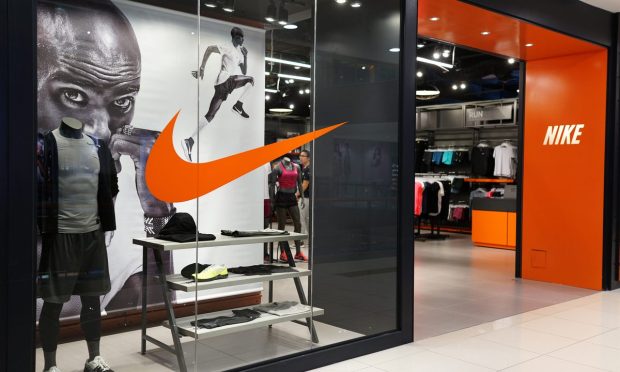Nike Pledges Further Consumer Connection and Innovation To Extend Athleisure Trend

Nike. A small word but a mighty brand that can perk-up retailers’ — and consumers’ — ears in an instant, while its ‘Swoosh’ logo is a proven driver of blockbuster sales in almost every category.
However, for all its clout and market share, Nike is still not immune from market forces. In fact, its exposure to supply chain challenges, manufacturing headwinds, and economic realities such as inflation, consumer confidence and income, loom larger than ever.
“Whenever there’s turbulence, I always go back to the fundamentals,” Nike President and CEO, John Donahoe, told analysts and investors on the company’s conference call Monday (Dec. 20). “For Nike, that means putting the consumer at the center and leveraging our long-term competitive advantages.”
Citing the nearly 60-year-old company’s deeply rooted values and culture of innovation, Donahoe said Nike is a brand consumers feel personally connected to. It’s a name powered by captivating storytelling, while crediting its resiliency and creativity for successfully navigating the global pandemic.
Consumers Just Want to Get Comfy
Donahoe noted that because of the pandemic, consumers’ focus on health aligns well with Nike’s greater mission to create a global health and fitness movement where the definition of “sports” is continually redefined.
Indeed, consumers now choose to wear athletic apparel daily, both when working out and when working from home. We’re now in an era where street fashion, athleisurewear and #OOTD — where people post what they’re wearing on social media, aka an Outfit of the Day — reign supreme.
Nike isn’t the only one playing in this space. For example, connected fitness company Peloton announced last fall that it was going to start selling its own private-label apparel — a move clearly aimed at tapping the increase in demand for pretty much everything athleisurewear.
Related: Peloton Launches Private-Label Apparel Amid Increased Athleisure Demand
Peloton said it made this decision to enhance consumers’ lifestyles well beyond the part of the day they’re working out.
Even Rent the Runway got into the athleisurewear space during the pandemic, offering consumers the option of renting designer loungewear to make Zoom meetings feel like more of a special social occasion than another “to-do”.
“We believe we’re seeing clear indications that our customers have adapted to a new hybrid world in which COVID is still present, but fashion is as important as ever,” Rent the Runway’s CEO and co-founder Jennifer Hyman said at the time.
See also: Rent the Runway Eyes Potential Opportunity Beyond Fashion
Sparking New Movements
Although it already enjoys some of the most brand-loyal customers in the industry, Nike is determined to further expand its base.
“In apparel, we’re driving energy in the market through design that resonates with consumers,” Donahoe said.
For instance, they’ve launched women’s dance shoes, created in partnership with professional dancers and choreographers, which Donahoe said blend style with performance.
“As we continue to accelerate our strategy and fuel the expanded definition of sport, we can more deeply connect with women and create an even sharper focus,” Donahoe said.
In a hat tip to rampant after-market customization of off-the-shelf shoes, Nike will also make their “AJ36” Air Jordan sneakers lighter and customizable, while catering to environmentally minded shoppers through the launch of the Alphafly Next Nature, its first sustainable performance running shoe.
“We know the future of sport depends on a healthy planet, and we remain committed to doing our part to protect that future,” said Donahoe.
Speaking of protecting the future, Nike is also focused on advancing its diversity and inclusion efforts, pointing to the recent launch of tennis star Serena Williams’ debut collection, Serena Williams Design Crew, which is focused on redefining what female sports and athletes should look like.
Nike’s Growth and the Road Ahead
In terms of numbers, Nike said its digital sales increased 12% for the three months ending Nov. 30, with 40% of this growth happening across North America.
As far as what’s next for Nike, the $250 billion company is tackling an array of initiatives, including its recently announced RTFKT partnership. As PYMNTS reported, Nike’s acquisition of the fashion startup and nonfungible token (NFT) collectible, represents its desire to dip its toes into the metaverse.
Read more: Nike Buys Digital Fashion, NFT Startup RTFKT
“The RTFKT acquisition allows us to extend this reach to serve and delight consumers and creators in both the physical and virtual worlds,” Donahoe said of this acquisition. “We will invest in the very talented RTFKT team, creator community and cutting-edge innovation to deliver next-generation experiences that involve the RTFKT and NIKE Inc. brands.”
Similarly, Nike recently rolled out NIKELAND on Roblox, a three-dimensional consumer experience where people can visit a virtual Nike store and play sports in a virtual reality world.
Whether Nike customers end up running on trails or through virtual worlds, the sneaker-giant wants to be a part of that action.
Said Donahoe, “Nike is meeting young athletes wherever they are, encouraging them to let their imaginations run wild, and rewarding real-world movement through new virtual experiences.”
For the record, Nike’s fiscal second-quarter net income rose 7% to $1.3 billion, on revenues that rose 1% to $11.4 billion.
